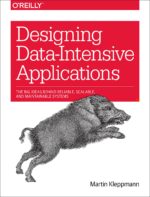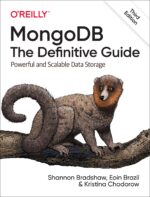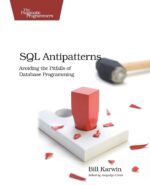Learning SQL
to see book content Click Here
As data floods into your company, you need to put it to work right away―and SQL is the best tool for the job. With the latest edition of this introductory guide, author Alan Beaulieu helps developers get up to speed with SQL fundamentals for writing database applications, performing administrative tasks, and generating reports. You’ll find new chapters on SQL and big data, analytic functions, and working with very large databases.
Each chapter presents a self-contained lesson on a key SQL concept or technique using numerous illustrations and annotated examples. Exercises let you practice the skills you learn. Knowledge of SQL is a must for interacting with data. With Learning SQL, you’ll quickly discover how to put the power and flexibility of this language to work.
- Move quickly through SQL basics and several advanced features
- Use SQL data statements to generate, manipulate, and retrieve data
- Create database objects, such as tables, indexes, and constraints with SQL schema statements
- Learn how datasets interact with queries; understand the importance of subqueries
- Convert and manipulate data with SQL’s built-in functions and use conditional logic in data statements
From the Preface
Programming languages come and go constantly, and very few languages in use today have roots going back more than a decade or so. Some examples are COBOL, which is still used quite heavily in mainframe environments; Java, which was born in the mid-1990s and has become one of the most popular programming languages; and C, which is still quite popular for operating systems and server development and for embedded systems. In the database arena, we have SQL, whose roots go all the way back to the 1970s.
SQL was initially created to be the language for generating, manipulating, and retrieving data from relational databases, which have been around for more than 40 years. Over the past decade or so, however, other data platforms such as Hadoop, Spark, and NoSQL have gained a great deal of traction, eating away at the relational database market.
As will be discussed in the last few chapters of this book, however, the SQL language has been evolving to facilitate the retrieval of data from various platforms, regardless of whether the data is stored in tables, documents, or flat files.
Why Learn SQL?
Whether you will be using a relational database or not, if you are working in data science, business intelligence, or some other facet of data analysis, you will likely need to know SQL, along with other languages/platforms such as Python & R. Data is everywhere, in huge quantities, and arriving at a rapid pace, & people who can extract meaningful information from all this data are in big demand.
Why Use This Book to Do It?
There are plenty of books out there that treat you like an idiot, or some other flavor of simpleton, but these books tend to just skim the surface. At the other end of the spectrum are reference guides that detail every permutation of every statement in a language, which can be useful if you already have a good idea of what you want to do but just need the syntax. This book strives to find the middle ground, starting with some background of the SQL language, moving through the basics, and then progressing into some of the more advanced features that will allow you to really shine. Additionally, this book ends with a chapter showing how to query data in nonrelational databases, which is a topic rarely covered in introductory books.










Be the first to review “Learning SQL”